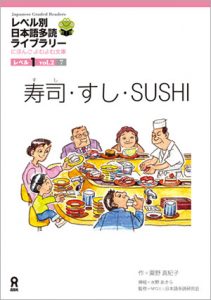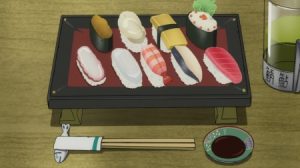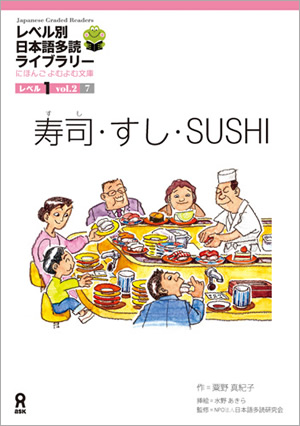 この本はとてもおもしろいとおもう。よもむずかしですがたのしです。えがすきです。
この本はとてもおもしろいとおもう。よもむずかしですがたのしです。えがすきです。
This book is very fun because it’s all information about sushi. Different types of sushi, what fish they are made from, and where sushi originated from. It had many unfamiliar words and phrases. I did not notice that this book is actually a level 1 book so that makes sense. Although it is very informational I would recommend that level 0 students not read this as they would have to look up several words and phrases in order to understand. 




